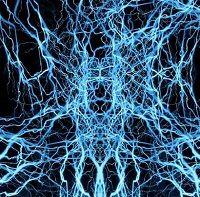Article
Sustained Neuropathic Pain after Peripheral Nerve Injury
Author(s):
Sustained neuropathic pain following peripheral nerve injury may be caused by the decrease of expression of spinal astrocyte connexin43 according to a recent study.

Sustained neuropathic pain following peripheral nerve injury may be caused by the decrease of expression of spinal astrocyte connexin43 (Cx43), according to findings published in the journal Brain, Behavior, and Immunity.
Researchers from Hiroshima University in Japan aimed to investigate the effects of decreased astrocytic Cx43 expression on neuropathic pain following peripheral nerve injury. The spinal cord astrocytes they studied are a critical factor in the maintenance of neuropathic pain, the researchers added, even though the role of Cx43 in nociceptive transduction is not completely understood.
The researchers noted in a press release that Cx43 expression is regulated by the inflammatory tumor necrosis factor (TNF) and can lead to reduced expression of the glutamatergic neurotransmission. The statement continued by adding that by targeting the recovery of Cx43 expression using novel drugs or gene therapy may be able to provide new insight into developing strategies to combat not only neuropathic pain but also neurological disorders overall.
The authors noted that various Cx types were previously identified in the spinal cord. For example, Cx43 is preferentially and mainly expressed in atrocytes, while altered astrocytic Cx43 expression is linked to neurological disorders like multiple sclerosis. But the association between Cx43 expression levels and changes in pain perception remains a controversial topic.
The results of the study suggested that TNF manipulates the down regulation of astrocytic Cx43 and GLT 1 expression after an inflammatory event where nerve injury resulted in the activation of cytokines like TNF. The researchers added that this type of event can result in increased excitatory synaptic activity.
“When down regulated Cx43 expression is restored by adenovirus vector expressing Cx43 in mouse model, reversed mechanical hypersensitivity was observed,” explained study author Dr. Norimitsu Morioka in the statement. “In addition, down regulated GLT 1 was reversed by restoration of Cx43 by adenovirus vector expressing Cx43. It is possible that Cx43 directly regulates GLT 1 expression and function.”
Morioka added that further investigation is required to fully understand the molecular mechanisms that control the down regulation of Cx43 related to GLT 1. But, the authors continued, these results suggest that the spinal astrocyte Cx43is essential for maintaining neuropathic pain after a peripheral nerve injury. Additionally, the researchers believe that modulation of Cx43 could be a new analgesic development target for neuropathic pain.





